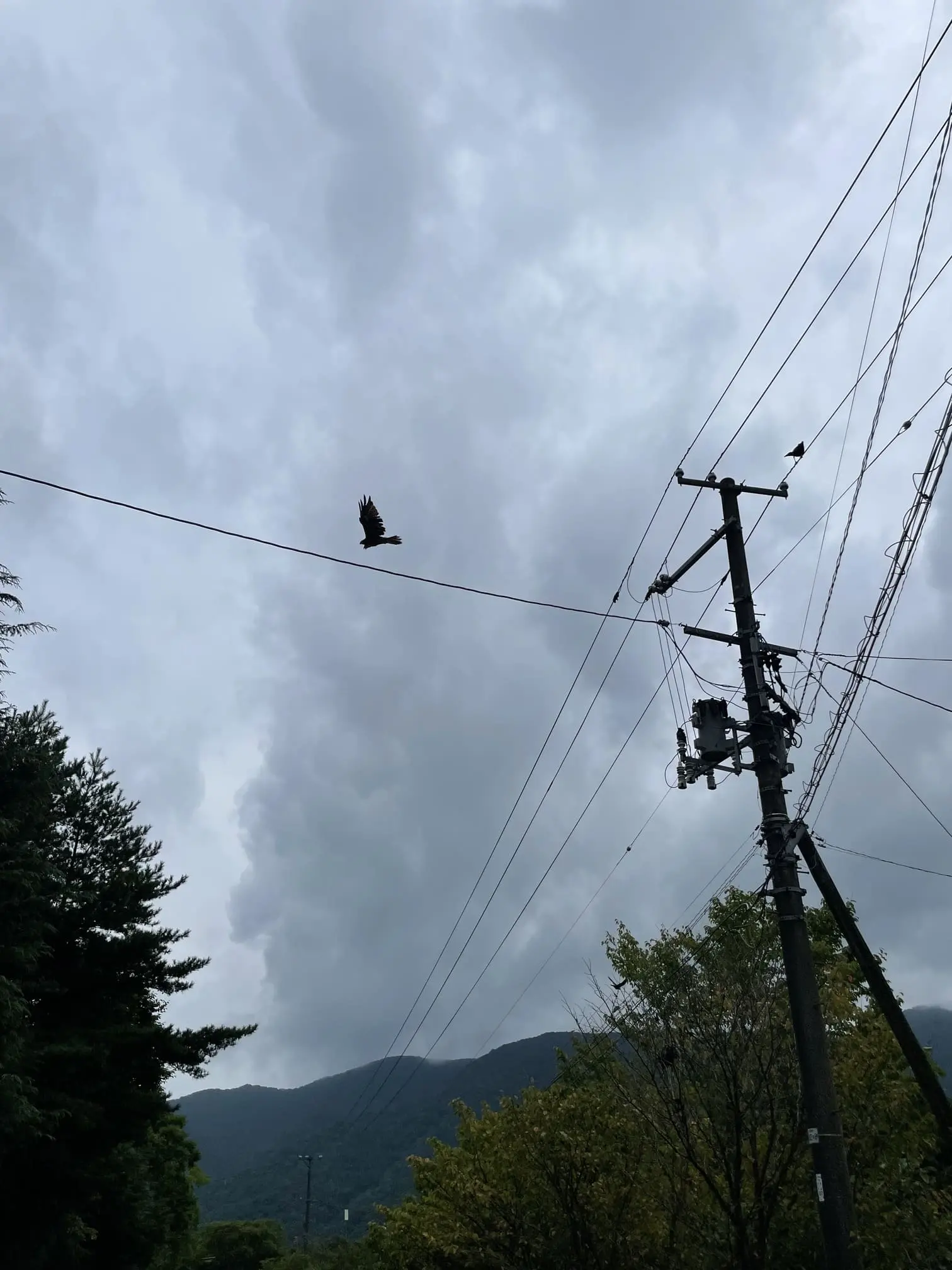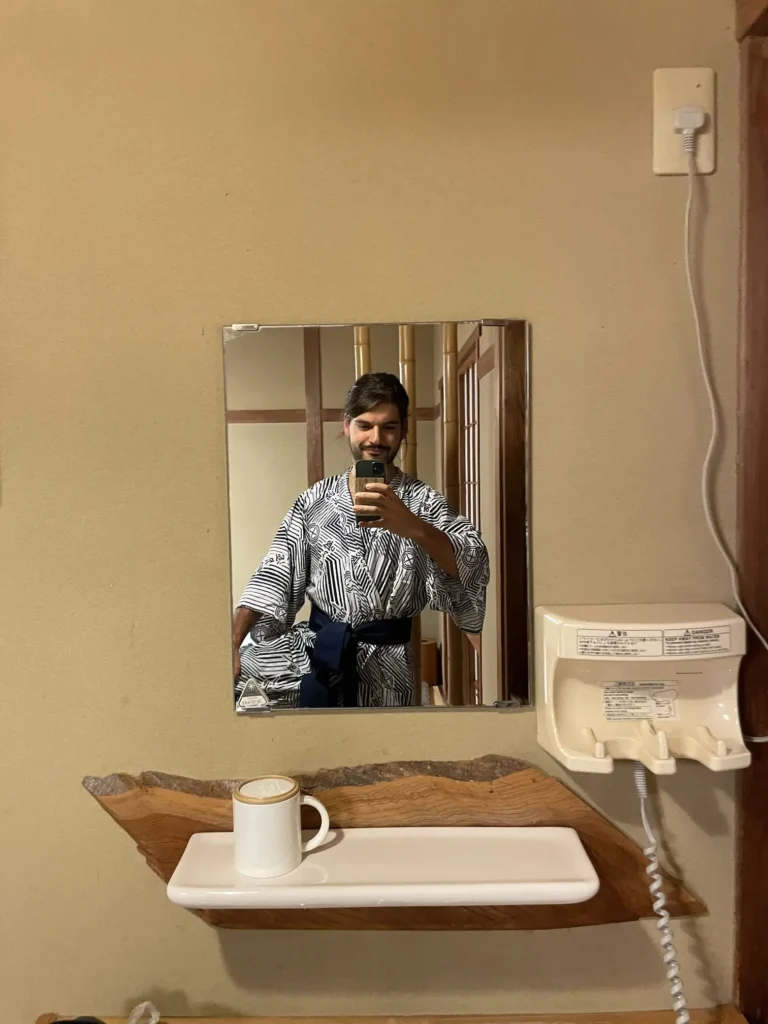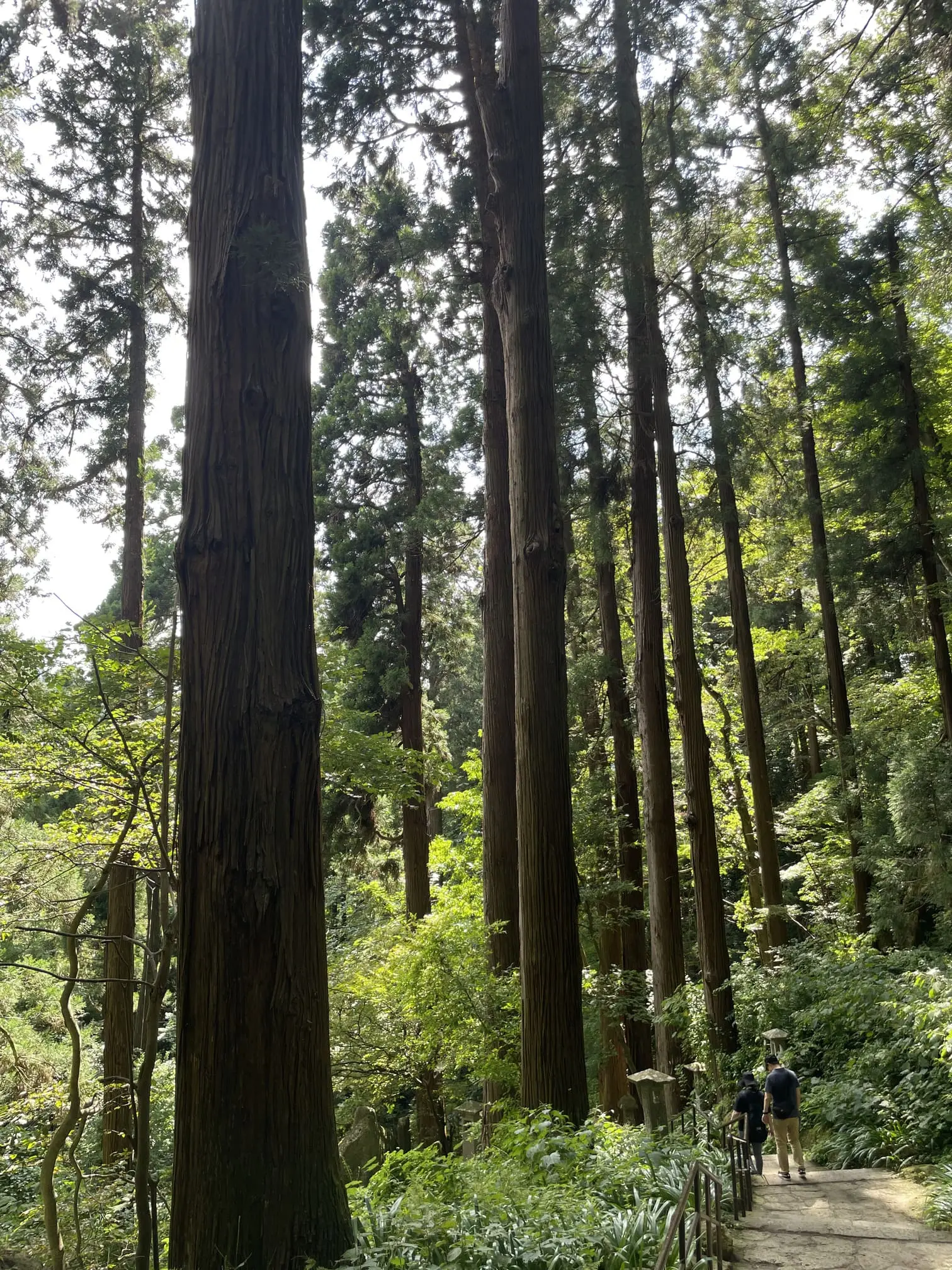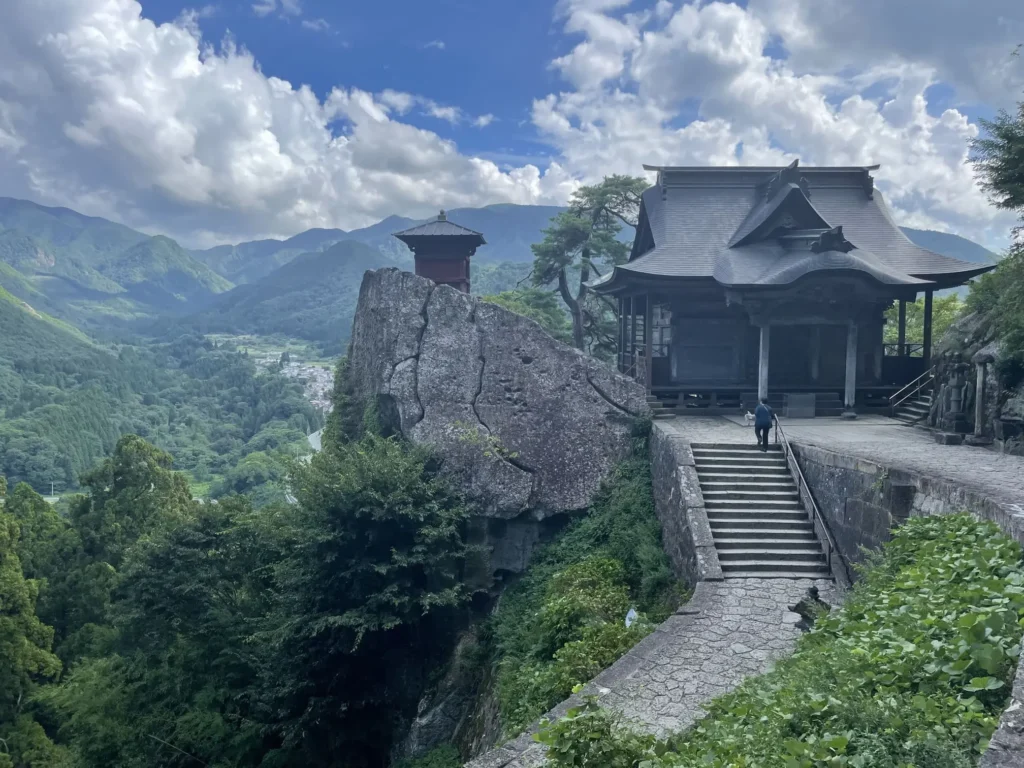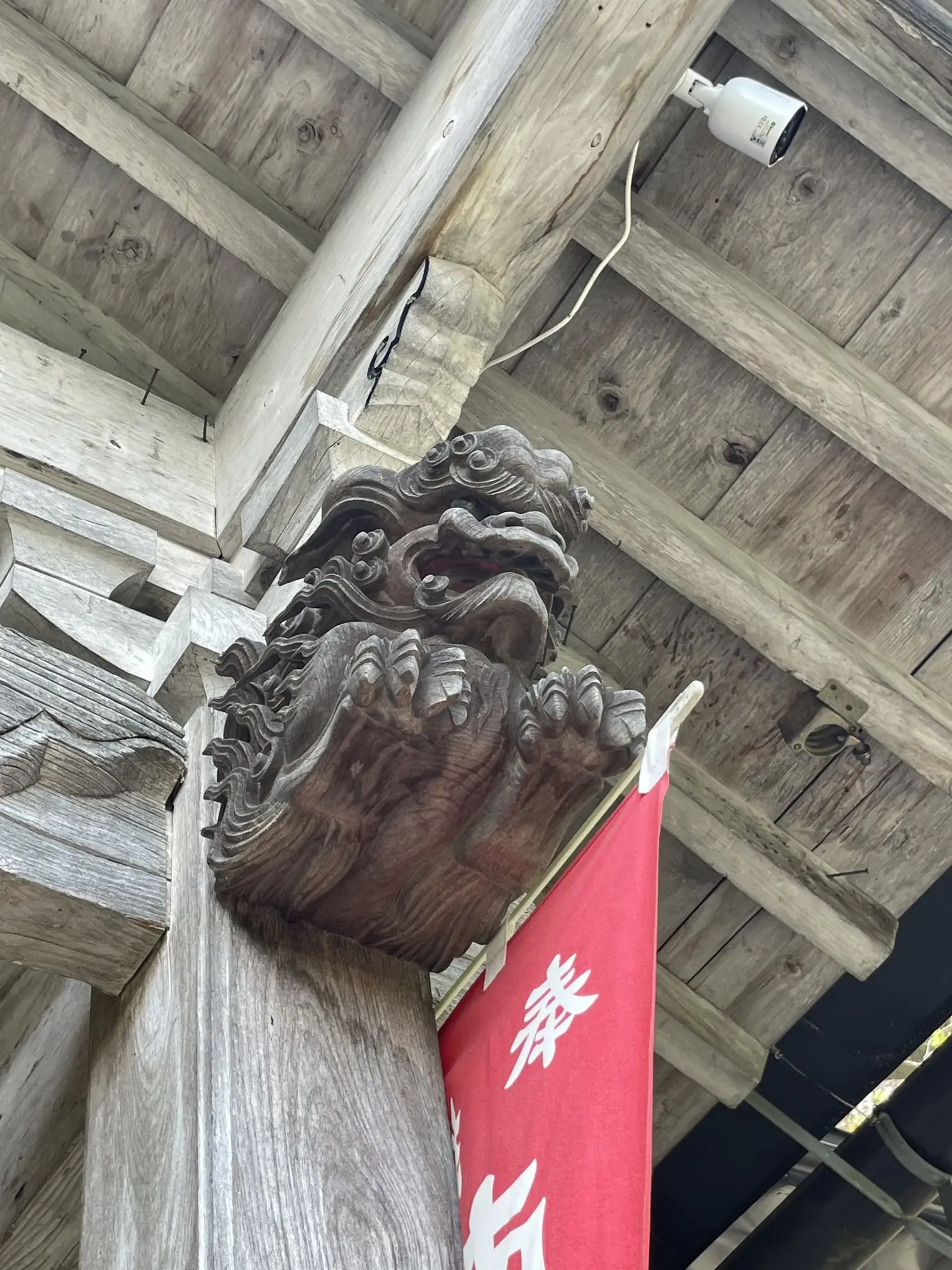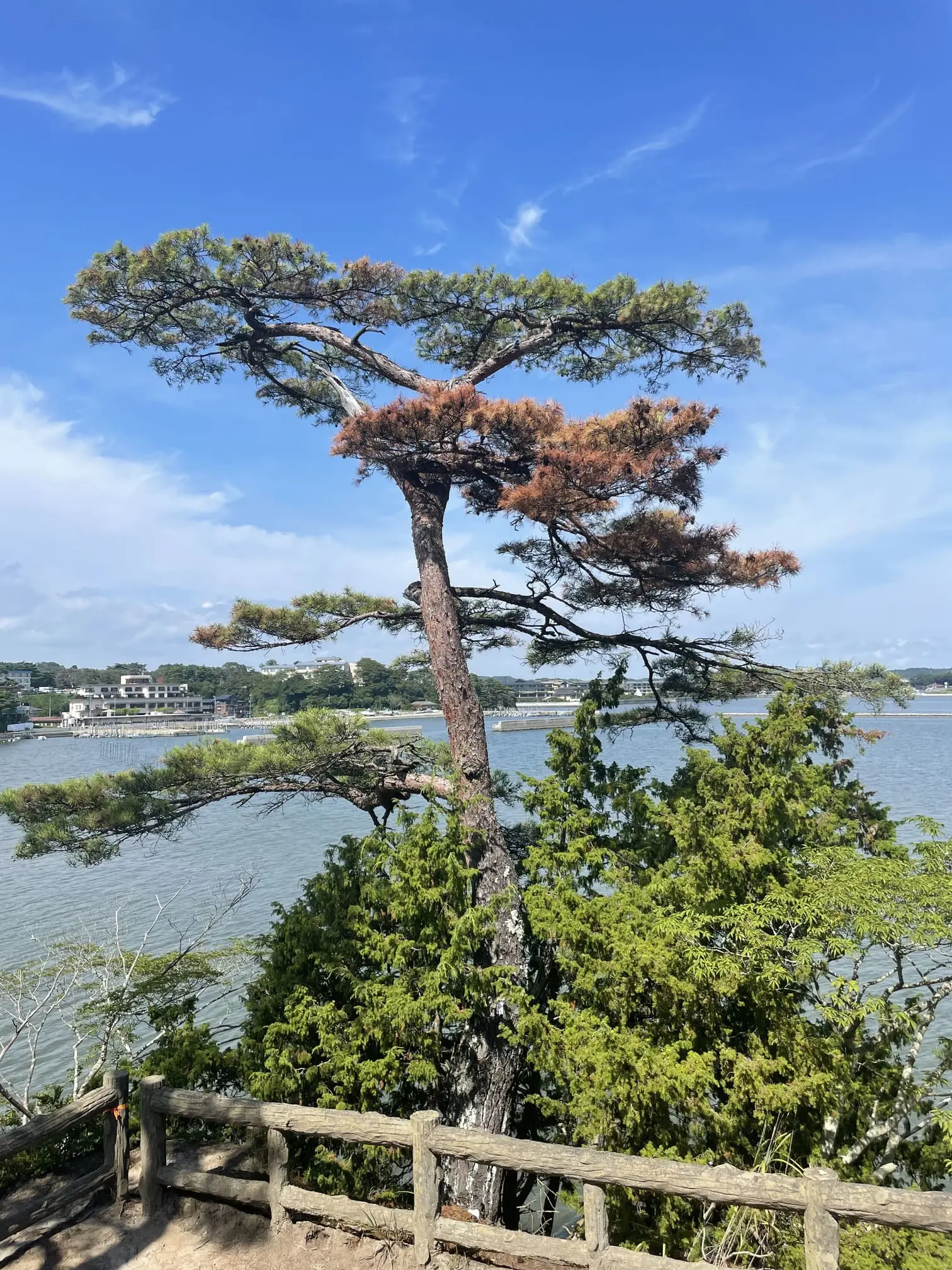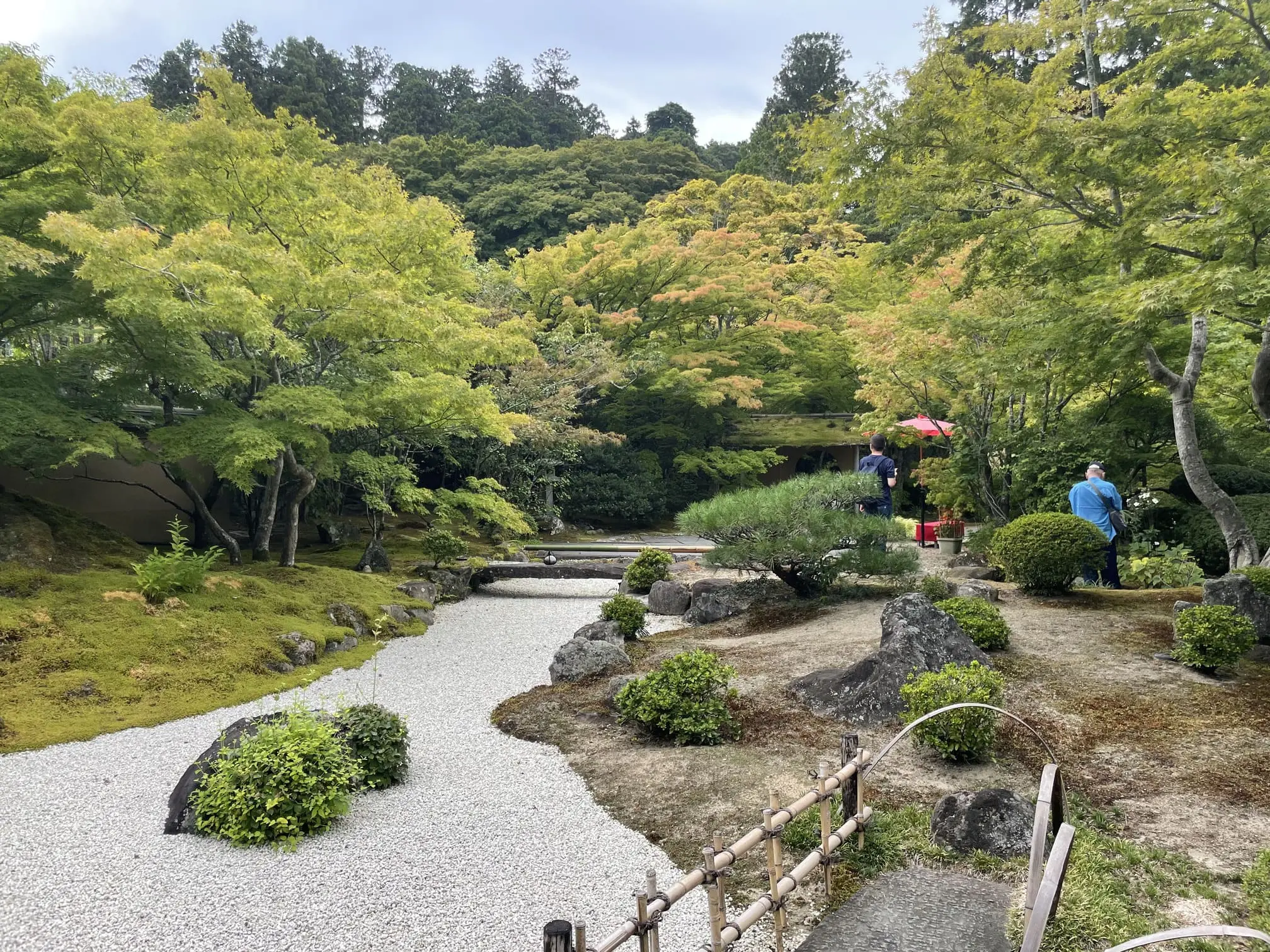Let’s continue our adventure in the north of the country, one unexpected encounter follows another, and the desire to discover more and more only grows stronger. A farewell to my Sendai companions from the previous day, and I set off in search of my first Japanese traditional hotel (Ryokan) experience, with its devilishly pleasant thermal baths.
I’ll be taking you on a tour of the Yamagata and Miyagi prefectures, just follow me:
Early wake-up to reach the onsen villages in Miyagi Prefecture (36 km).
Quick breakfast with the friends from the previous night, we exchange contacts and I’ll let them know when I pass through Sendai. A group photo and I go to pay for my night like an honest person at the reception (6 euros, that’s a good deal here).
My goal is a secret Ryokan (inn with hot springs and meals) in a hidden village. First, I pass through Naruko Onsen, known in the region for its rejuvenation, but I continue a bit further to the hidden village Onikobe Onsen. I face a tough climb only to be stopped at the ryokan I targetted due to the upcoming typhoon in the region, great…
So I need to find a plan B. I first take a little tour of the mini-geysers and the source flow spots. Not very safe with the hot jets expelling on the path.
Alright, it’s time to find shelter and another nice Ryokan named Todoroki. The lady is super nice and polite.
She brings me the yukata (a light kimono provided in Ryokans, usually worn outside in summer because it’s less thick for the heat) and serves me dinner. What a delight. A parade of dishes, each more delicious than the last in small plates. You feel like a little king in his mini-palace.
My room is great with the futon and tatamis (not the ones from elementary school judo classes, the real ones with rice plants).
I then go downstairs to enjoy the hot springs: one separate bath for men and women (the water was burning, I couldn’t fully immerse myself), a private bath, and a mixed bath outside (rotenburo). The golden rule is that you have to be naked to enter the water, it’s the custom as they say. I didn’t mention my tattoo though, I know it can be problematic depending on the facility. But I take a chance and since no one else is there, I can enjoy it without worry while trying to hide it as much as possible.
The solo nighttime ambiance is so pleasant, I relish it. Forgetting the stress of planning or thinking about what to eat, it’s great. It’s in these moments that you appreciate simple things, it may sound cliché but it’s true, I’ll probably repeat myself even haha.
I’m going to spend the night resting on my futon in a Ryokan lost in the Japanese countryside.
Day 9 Onikobe Onsen to Funagata (Yamagata) (82 km)
Enjoying the onsen pleasures one last time and the (savory) breakfast.
The grandma was super nice and even offers me a bag of candies, it’s so sweet. The 13,000 yen (~82€) for the night and two meals are WELL worth it. I recommend this kind of experience to anyone passing through the remote corners of Japan.
Late start then. I arrive in the mid-afternoon at Ginzan Onsen, which is a bit more upscale. It used to be a mining town with silver resources.
Today it’s just touristy but really beautiful, like a Japanese Colmar (Alsace, France) haha. I take a mini hike to see the mines and enjoy a super delicious soba ice cream (buckwheat but still sweet, don’t worry). The Japanese master the art of ice cream without a problem.
I then want to head to the west coast of Tohoku (northern part of the country). I cover as much distance as possible until a random spot to pitch my tent near a baseball field. After seeing so many, I had to squat on one someday haha. Mosquitoes and spiders are part of the experience but I quickly fall asleep to start on time tomorrow.
Day 10 Funagata to Sanzan Dewa (59 km)
Today, the goal is Mount Haguro San (San meaning Mountain) and the Sanzan Dewa region (the three sacred mountains), a renowned pilgrimage site in northern Japan.
I want to try the Shukubo (sleeping at a temple and tasting their vegetarian cuisine). But first, another soba stop at an old man’s place who has his restaurant in his house. The decor is really like an 80s/90s style apartment, I love it!
Arriving at the destination to try the Shukubo, all the open institutions (5-6) refuse me because you need to book in advance. I didn’t know Japanese pilgrims were so well-organized, it’s a miss.
The biggest problems with these reservations are the complicated websites to translate first and often requiring a (preferably Japanese) phone number that you can’t get as a tourist just like that, so it won’t be easy to organize for me even next time.
So I sit in a café to try a weird vinegar drink, not very good, the first gustatory misstep haha but the waitress is adorable and her cat is very cute and friendly.
I then climb the mountain by bike, disappointed to have to camp on the peaks.
Off I go. I don’t last long and I’ll visit the temples of the mountain tomorrow morning.
Day 11 Sanzan Dewa to Murayama (71 km)
Early rise for a 2-hour visit to the Buddhist complex of Haguro San, the buildings are reddish and colossal. It’s a pity there are a lot of construction works around the pagoda and the bell tower.
Several small barracks represent different deities you can pray to. Not far from the pagoda, there’s a magnificent thousand-year-old cedar named Jiji San (Grandfather). That’s a trunk, it competes with baobabs here.
I then head back the way I came to cycle towards Yamagata and the Yamadera temple. Yes, it’s a succession of Buddhist temples this week.
The physical energy I recovered at Onikobe is declining again and my body demands a break. I’ll take it in 2 days when I reach Sendai. I’ve been cycling non-stop for over 10 days with a truncated preparation, which I’ve never done before.
Third consecutive night of camping between trees and paths of a small village. It’s incredibly hot, I sleep without a sleeping bag, just a light sheet and the mattress to stay as cool as possible.
Day 12 Murayama to Road to Sendai (Miyagi) (77 km)
Some animals made noise last night, I got a bit scared but everything is fine.
For the plans of the day, I decide to skip Yamagata, nothing interesting to see there now and I head directly to Yamadera. This temple nestled in the heights is well hidden and requires a nice ascent of 1015 steps. The buildings are not necessarily imposing or very beautiful but the place and the view of the valley make the place mystical and breathtaking. Building these constructions several centuries ago on these heights must have been a real statement and challenge!
I meet a nice Japanese man with whom we chat for a few brief moments, fleeting discussions with little impact, but which add to the charm of these unannounced visits and journeys.
On the descent, in the village, I look for kakigori (shaved ice) but it’s so-so. There are probably good ones but this one really felt like biting into ice with a cheap syrup poured over it. Let’s find a proper place to try it next time.
The weather is starting to turn bad and I want to avoid the gray clouds in the Yamagata valley to return to Miyagi and its heights. While giving my maximum to avoid the rain, night is beginning to fall.
I stop for a good ramen and meet a trio of boys from Bangladesh, they live in Sendai and suggest I contact them when I arrive. I’ll let them know tomorrow then.
At the summit, I find no interesting place to sleep so I decide to continue a bit but it’s difficult in the dark, some trucks even honk at me, it’s very stressful I must admit. In the end, I pitch the tent near a house that seems unoccupied (at least for this night).
Day 13 Sendai Half Pause 1 (31 km)
After a nighttime check of the visits to do in Sendai, I see that on the way, the second Nikka distillery (the only high quality Japanese whisky I tasted) in the country offers tours. So I decide to delay my arrival in the city to enjoy this part of alcoholic history and the modern monument of recognized Japanese whisky.
Little explanation of the tour :
The founder of the Nikka brand, passionate about whisky and wanting to get hands-on experience, went to Scotland to learn from the best.
Upon his return, he analyzed the geology of Japan and located his first distillery on the island of Hokkaido, perhaps the closest to the Scottish climate. Later, he wanted to open a second one for other whisky experiments with less peat. He was a fan of the Scots and their types of whisky but wanted to innovate somehow.
Founded in 1969, the Miyagikyo distillery was made to produce a milder whisky with the contribution of water from two rivers in full nature. He did everything to make the complex blend into the surroundings and not devour all the surrounding nature. Even the wood used for the barrels is managed responsibly to avoid excessive deforestation (I approve the idea).
For my visit, I make one mistake, I won’t be able to taste whisky because I mentioned my bike and it’s zero tolerance in Japan even on a bicycle, I’ll have a lame apple juice for tasting, great… (my face is the Harold meme if you have the reference).
That doesn’t stop me from sniffing the olfactory test tubes to decide that a bottle of Nikka Coffey Grain would be a superb choice for the return if I can find it in Tokyo. I can’t carry fragile bottles throughout my trip, it would be madness. Plus, the prices are pretty much reasonable.
This type of whisky uses the Coffey still principle (column still) which is a bit different from classic distillation. There are more losses and processes explaining its rarity and slightly higher price.
It’s time to head towards Sendai. You can tell it’s a big city, well-spread out with lots of greenery and parks until you reach downtown.
I check-in to my capsule hotel, and to my surprise, it mentions that tattoos are not allowed. My first little scare… the showers are not closed off, so I take quick, express showers so that no one sees the tattoo on my arm and I can hide as quickly as possible, haha.
To make up for it, I aim for a Gyutan outing to enjoy the much-coveted beef tongue dish, and what a pleasure it is. It’s a bit more expensive than usual dishes, but my god, it’s so good and tender. The slightly smoky taste from the charcoal grilling, mamamama, it’s just indecently good. With my little Highball (Haiboru, Japanese style), I’m simply over the moon!
I then contact the acquaintance from the previous day, Arafat, for an unexpected outing to the beach. He drives a bit wildly but gets us there safely. We enjoy the sound of the waves and the pleasant night weather while chatting. They tell me about their difficulties integrating into Sendai, a city less accustomed to foreigners; one is studying the language and the other works in convenience stores (konbini). They manage as best they can wherever life leads them. It’s nice to discover, anyway.
Then a good sleep to rest and prepare for tomorrow, which will be my first real BREAK. Oh my god, I can’t wait.
Day 14 Sendai - Matsushima Pause 2
Finally, a day with zero kilometers of cycling. The objectives are clear: visit Matsushima by train and then return to enjoy a baseball game (Yakyū in Japanese) to experience the atmosphere and the level of play, even though I only understand the basics (pun intended for those who know).
First, I want to exchange my yen for euros. I do this for the equivalent of 100 euros, but never again at that exchange rate, which was simply outrageous. I lost about 10% compared to the real exchange rate. Once but not twice, sorry. I’ll keep my euros for the return to France and use my accounts despite some fees (still less than these exchange offices).
Arriving in Matsushima, a bit in the middle of nowhere, I discover their fresh fish market, which looks really nice. You can even eat oysters there. I wanted to try some, but it was too early for my stomach, and by the time I returned, the stall was already closed (after 4 pm)… Maybe next time.
I finally reach the coast, for which the town is famous, with its multiple islands close to each other. I find it splendid. One of them is connected by a bridge, so I decide to walk around it for a good hour. You can see the flora, the small park, the other islands, a truly relaxing moment.
Next, I head to the Buddhist temples (as usual) :
- Starting with Zuigan-ji. Initially built by monks, it was later expanded and made majestic by Date Masamune (the man who put Sendai on the map of Japan). You can admire (no photos allowed) the Fusuma-e, the art of paintings on Japanese sliding doors. They even imported wood from Wakayama (nearly 1000 km away for special cedar). You can see hawks representing Date’s clan, which belongs to the Rinzai Zen sect based in Kyoto, as well as very amusing Chinese lions, showing more imagination than realism since they had never seen real lions.
Several calligraphies also caught my attention and should be an inspiration (for me): “Do not envy what others have” and “Suffering can be a seed for joy.” I’ll be inspired by them on occasion (The cycling trip reminds the last one pretty often 😛 ). The gardens are also very nice, as is the museum, where I discover that there’s a manga about the city and a certain historical monk. You can see the art of Sumi-e, ink painting that is very abstract and really shows the artist’s movement.
- I continue to Entsu-in and its superb gardens to admire in all seasons (the orange of autumn must be wonderful). I’ll have to be content with the stunning bright green of maples and cedars. You can also design your own Buddhist bracelet and understand the meaning of each bead.
I quickly visit Kanrantei, the city’s teahouse with a view of the bay. What a delight and a true pause in time sitting cross-legged (I’m starting to get used to it). It’s a house that was originally in Kyoto and was literally transported here as a gift to Date—what a crazy idea.
That’s not all, but I need to get to the Golden Eagles of Tohoku (Sendai) vs. the Orix Buffaloes (Osaka) baseball game on time. I buy a cap to fit in with the fans but also because I don’t have one and it’s very handy under the blazing sun without my bike helmet.
The atmosphere is very engaging and funny with the Japanese fans’ chants. It’s motivating and a bit kawaii, haha. I join in the singing when I can read the letters.
The game itself is tight but slightly boring, 0-0 in regular innings, so it goes into extra innings. The Orix Buffaloes make the Golden Eagles crack and finally win 0-2. No regrets, it was definitely worth it for a ticket costing 15-20 euros!
Before heading back to my capsule, I manage to see my friends from Sendai I met at the campsite a week ago (see Day 7). We have yakitori and another drink in a nice little bar. The reunion is cool despite some language barriers. I can only thank them for their warm welcome and head back with a light heart before resuming the bike for a new week and a new prefecture. I can’t wait.
Let’s see each other again for part 3!





